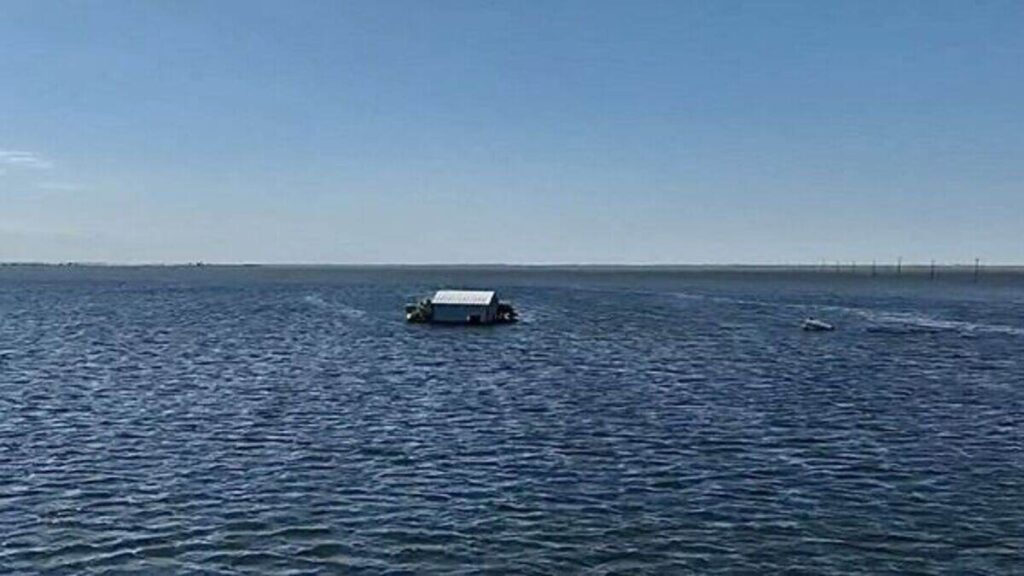
Tulare Lake, located in California’s San Joaquin Valley, was once one of the largest bodies of fresh water in the entire United States. But about 130 years ago, it disappeared – largely due to the greed of colonialists, who drained the water to create farmland.
In the late 19th century, Tulare was more than 100 miles long and 30 miles wide and was “the largest body of fresh water west of the Mississippi River,” Vivian Underhill of Northeastern University explained in a press release.
At that time, it contained so much water that a steamship could transport “agricultural supplies from the Bakersfield area to Fresno (in the central San Joaquin Valley) and then to San Francisco” – The distance is almost 300 miles – she said.
According to the National Weather Service, Fresno receives an average of a little more than 10 inches of rain per year, and sometimes as little as three inches. Looking at the arid landscape of the San Joaquin Valley in the 21st century, it is difficult to imagine that such a large body of water would dominate the landscape.
ALSO READ: Heavy Storm Forces Evacuation as Water Levels Rise in Northeast Rivers
The researcher specializing in ethnology and environmental justice explains that the lake began to disappear in the late 1850s and early 1860s, due to “the State of California’s desire to appropriate historic indigenous lands and bring them into the private sector.
‘‘She explains that the process is called “reclamation” and often involves ‘‘draining wetlands or irrigating desert land to create farmland.”
The first time the lake completely disappeared was around 1890, when ‘‘its waters were used to irrigate all the dry land around that area,” she continued. “California gets a lot of snow in the winter and rain in the spring,” Underhill said.
POLL—Is Climate Change a Major Threat That Requires Immediate Policy Action?
“Birds of all kinds – pelicans, hawks, waterfowl” are returning, said Underhill, adding that “the Tachi people also say they have seen burrowing owls nesting around the coast,” a species described as “vulnerable or at risk.”
For Tachi Yokuts, “returning from the lake was an incredibly powerful and spiritual experience,” Underhill said. Many of these agricultural workers suffered heavy losses due to the floods, with many losing their homes completely.
Efforts are already underway to drain the lake again, and Underhill said she hopes it will remain in some form for about two more years – despite recent river atmospheric events occurring in California this year could complicate things.
ALSO READ: Alaska Authorities Resume Search for Woman Who Disappeared Under Frozen River While Rescuing Dog
“Amid climate change,” Underhill said, “floods of this magnitude or greater will occur with increasing frequency. “At some point, I think the State of California needs to realize that Tulare Lake wants to stay.”
She also pointed out that last year`s revival was not the lake’s first revival since the 1800s. “It happened in the 80s, once in the 60s, several times in the 1930s,” she said. “It wasn’t a flood.
Less than a year after its resurgence, Tulare Lake’s surface area has dropped to just 2,625 acres, according to the Kings County Office of Emergency Services. And authorities are now expecting his “imminent disappearance,” Abraham Valencia of the emergency services office told reporters.
You Might Also Like:
Authorities Discover Bodies of Tennessee Deputy, Woman he Arrested in River
Sonar Images Show Wreckage From Baltimore Bridge Collapse at River Bottom
Mississippi Bus Driver Hailed as “Hero” in Crash That Injured 10 and Ejected Her
Tesla Model Y Saves Driver in Fatal Crane Collapse
Indiana Men Find Driver Trapped in Wrecked Vehicle While Scouting Fishing Holes
